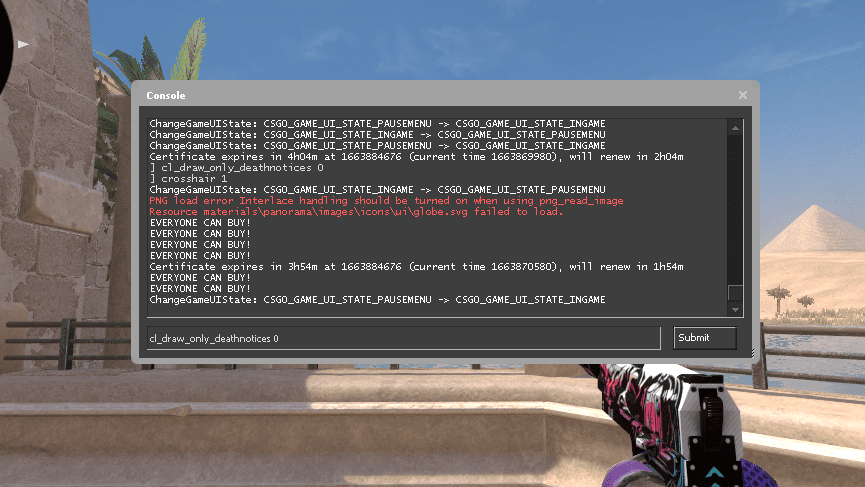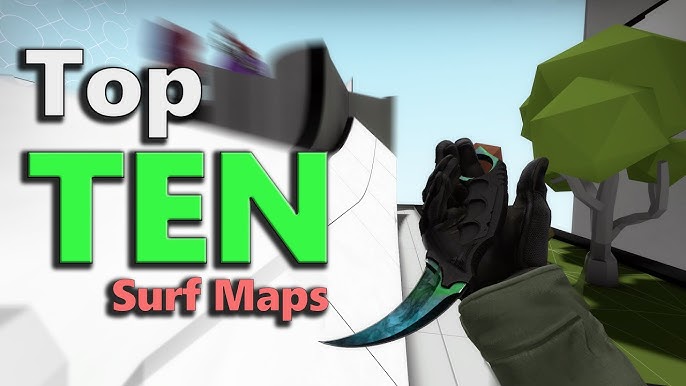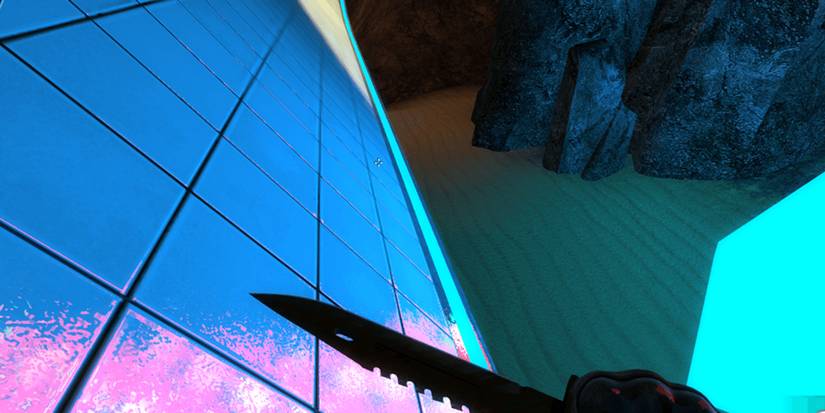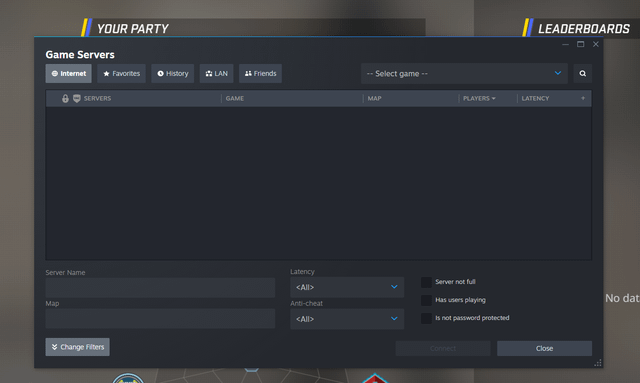Beyond the Gunfight: How Counter-Strike: Source Surfing Became a Physics-Defying Art Form I remember joining a random Counter-Strike: Source server back in the mid-2000s and seeing players flying across the map, seemingly defying gravity.

I remember joining a random Counter-Strike: Source server back in the mid-2000s and seeing players flying across the map, seemingly defying gravity. At first, it looked like a broken game, just another buggy mod from the burgeoning online PC gaming scene. But the more I watched, the more I realized it was something much more interesting. In the grainy, low-resolution textures of that public server, amidst the cacophony of gunfire and blaring MIDI music, these players were performing feats of physics manipulation with a strange, silent grace. They were surfing, and I was instantly hooked. This wasn't about headshots and bomb defusals; this was a pure expression of movement, a community-created mod that transformed Counter-Strike: Source into something entirely new.
Discovery and Exploitation: Mastering the Movement
Counter-Strike: Source surfing, or CSS surfing, boils down to exploiting the game's physics engine. The core mechanic revolves around angled surfaces, or "ramps," and how the player model interacts with them. Instead of running and gunning, you're strafing and sliding, using carefully timed movements to gain and maintain momentum. The goal isn't to eliminate opponents, but to navigate elaborate obstacle courses as quickly and efficiently as possible.
The heart of surfing lies in air control. Strafing left and right while airborne allows you to "stick" to the ramp and adjust your trajectory. Mastering this takes time and practice. Holding 'w' or 's' is a cardinal sin for new surfers; it kills your speed and sends you plummeting. It took me weeks, maybe even months, of dedicated play to consistently maintain speed and control. The 'aha' moment came when I realized it wasn't about brute force, but finesse. It was about understanding the subtle feedback the game provided – the slight screen shake that indicated optimal speed, the almost imperceptible changes in the character's animation, the distinctive sound cues that signaled a successful ramp connection. Velocity management becomes crucial to execute complex maneuvers and long jumps. You're constantly building and preserving momentum, knowing when to air accelerate and when to let gravity do its work.
The real magic happened when players started discovering and refining techniques to exploit quirks in the Source engine's physics. Minute adjustments in strafing, combined with precise timing, allowed for seemingly impossible jumps and maneuvers, pushing the boundaries of what was thought possible.
The Art of the Surf Map
The beauty of surfing extends beyond the gameplay itself; it's deeply intertwined with the art of the surf map. These maps are meticulously crafted playgrounds designed to test and reward skill, creativity, and a deep understanding of movement.

Ramp Geometry and Flow: The angles, curves, and transitions of ramps are paramount. A well-designed map features a seamless flow, guiding the player through a series of challenges that feel both intuitive and demanding.
Obstacle Placement and Challenge: Obstacles, jumps, and gaps are strategically placed to test the player's skill and require precise timing and execution. These can range from simple gaps to complex sequences of ramps that demand perfect synchronization.
Aesthetics and Theme: While gameplay is king, aesthetics play a crucial role in creating an immersive and engaging experience. Map creators use textures, lighting, and environments to craft visually appealing worlds that complement the flow of the map.
Consider surf_mesa, a classic map with its stark, industrial aesthetic and challenging, angular ramps. The map's distinctive lighting highlights the sharp geometry, creating a sense of precision and control. Compare this to surf_utopia, with its ethereal glow, flowing curves, and a sense of otherworldly grace. surf_greatriver, on the other hand, presents a more open environment with longer jumps and a focus on maintaining speed over vast distances. Each map offers a unique experience, both visually and mechanically.
If I were to design a surf map, I would want it to be set in a lush jungle environment, teeming with vibrant vegetation and hidden pathways. A cool, dark color palette would dominate, punctuated by bursts of bright, bioluminescent flora. Ambient sounds of exotic birds and rustling leaves would create an atmosphere of serene danger, encouraging players to explore and discover hidden shortcuts and challenging routes.
The Competitive Scene
Counter-Strike: Source surfing wasn't just about personal enjoyment; it was a fiercely competitive scene. Surfers competed to complete maps in the fastest possible time, optimizing their routes and executing flawless maneuvers.

Timing and Optimization: Every millisecond mattered. Surfers used in-game timers and external tools, such as HSDraw, to plan out optimized routes, meticulously analyzing every jump and strafe to shave off precious fractions of a second.
Tiered Difficulty: Maps were often categorized into "tiers" based on their difficulty. A "tier 1" map would be relatively forgiving, designed for beginners to learn the basics. A "tier 5" map, however, demanded near-perfect execution, requiring advanced techniques and precise timing. Tier 1 maps often feature wide ramps and gentle curves, while Tier 5 maps are characterized by narrow ramps, intricate obstacle courses, and demanding jump sequences.
The Community: The surfing community thrived on online forums, dedicated servers, and collaborative map creation. There was a constant exchange of tips, tricks, and techniques, fostering a spirit of both competition and camaraderie. While specific individuals might not have achieved widespread fame, certain map creators and exceptionally skilled surfers were highly respected within the community. The atmosphere of a competitive surf server was electric. Players constantly strived to outdo each other, pushing the boundaries of what was possible. Rivalries were common, and new records were celebrated with a mix of awe and determination.

Surfing's Legacy: From Mod to Level Design Inspiration
The influence of Counter-Strike: Source surfing extends far beyond the confines of the game itself. Its innovative movement mechanics and creative map design have left a lasting mark on modern level design.

Movement Mechanics: The principles of momentum control and physics-based movement pioneered in surfing have been incorporated into numerous modern games. Games like Titanfall 2 and Apex Legends feature fluid movement systems that allow players to slide, wall-run, and maintain momentum in a way that is directly inspired by Counter-Strike: Source surfing.
Flow and Traversal: Surf map design has inspired the creation of more dynamic and engaging traversal systems in modern games. Level designers now pay closer attention to the flow of movement, creating environments that encourage players to experiment with different traversal options and find creative ways to navigate the space.
Creative Problem Solving: Surfing fostered a culture of experimentation and creative problem-solving within the Counter-Strike: Source community. This mindset has translated into other areas of game development, encouraging designers to think outside the box and create unique and challenging gameplay experiences.
As a level designer, my experience with Counter-Strike: Source surfing has profoundly influenced my approach to creating movement mechanics and traversal systems. I constantly strive to create environments that reward skillful movement and encourage players to explore the possibilities of the game's physics engine. The sense of flow achieved in a surf map, where every jump and slide feels perfectly connected, is something I try to replicate in the more complex environments of modern AAA titles.

Conclusion
My journey from a Counter-Strike: Source pub player to a dedicated surf enthusiast and, eventually, a level designer in the game industry, is a testament to the power of community-driven mods and their potential to inspire creativity and innovation. What started as a seemingly broken game mode transformed into a physics-defying art form that continues to influence game design today. I encourage anyone interested in movement mechanics, level design, or simply a unique gaming experience to explore Counter-Strike: Source surfing. You might just discover a new passion, a new appreciation for the possibilities of game physics, and a whole new way to play. So fire up Counter-Strike: Source, download a surf map, and prepare to defy gravity. You might be surprised at what you can achieve.